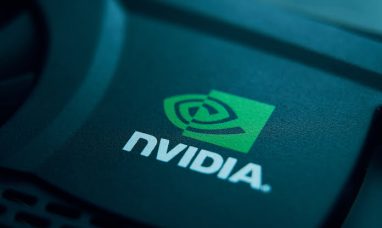The NFL sports media landscape is undergoing a major transformation, as streaming platforms like Amazon (NASDAQ:AMZN), Netflix (NASDAQ:NFLX), and YouTube take center stage in broadcasting live games. Just three years ago, the NFL signed an $11 billion deal with Amazon Prime Video, bringing Thursday Night Football exclusively to the streaming platform. This move has ushered in a new era of sports broadcasting, shifting the focus from traditional cable TV to digital streaming.
NFL Balances Traditional TV and Streaming
The NFL sports media landscape has long been dominated by broadcast TV, with major networks like CBS, Fox (NASDAQ:FOX), NBC, and Disney’s (NYSE:DIS) ABC airing the bulk of NFL games. While the rise of streaming services was inevitable, the NFL has taken a measured approach to this transition. Its media rights deals still prioritize wide distribution through broadcast TV, while incorporating new digital platforms.
In addition to its deal with Amazon, the NFL returned to Disney’s ABC for Monday Night Football, and the network will air Super Bowls in 2027 and 2031. The league is also expanding its reach by allowing local broadcasts of Thursday Night Football on traditional TV in tandem with Amazon’s streaming.
Hans Schroeder, COO of NFL Media, explained, “Streaming is clearly continuing to grow…but for us, it’s not an ‘either-or.’ We’ve always been more tethered to broadcast and free-to-air.” The NFL is embracing both worlds, blending the reach of traditional TV with the flexibility of streaming.
Streaming Platforms Expanding NFL Access
Streaming platforms have become integral to the NFL sports media landscape. Amazon’s Thursday Night Football, for instance, is broadcast over the air in local markets, while YouTube TV now holds the exclusive rights to NFL Sunday Ticket, making out-of-market games available nationwide.
In a surprising shift, Netflix, which historically shied away from live sports, signed a three-year deal with the NFL to broadcast Christmas Day games. The move, which reportedly cost Netflix $75 million per game, highlights how streaming platforms are entering the live sports domain.
Peacock, another streaming service, also aired an exclusive Wild Card playoff game last season and is slated to host a Friday night game in Brazil during the 2024 season. These deals illustrate how the NFL is gradually embracing streaming, giving fans more ways to watch games from anywhere.
The Evolution of the NFL’s Strategy
The NFL’s media strategy is evolving with consumer preferences. With cable TV subscriptions declining, the league has recognized the need to diversify its distribution model. Streaming platforms offer new opportunities to reach younger, tech-savvy audiences who prefer on-demand content over traditional TV.
“You have to meet consumers where they are,” said Anthony Palomba, a professor at the University of Virginia’s Darden School of Business. “Up until recently, media companies were focused on doing what was familiar, but now, they are exploring new ways to connect with fans.”
For example, the NFL’s focus on providing more flexible viewing options, like YouTube TV’s Sunday Ticket package and Amazon’s interactive shopping features during Black Friday games, reflects a growing emphasis on consumer choice. Fans now have more control over how, when, and where they watch their favorite teams play.
NFL’s Impact on the Future of Sports Broadcasting
As the NFL sports media landscape continues to evolve, the league’s approach to media rights could set the stage for other sports. The NBA recently signed a media rights deal with Amazon and NBCUniversal worth $77 billion over 11 years, while Major League Baseball (MLB) has forged new partnerships with ESPN, Fox, and Apple TV+.
While streaming presents new opportunities, it also introduces challenges. The variety of platforms and subscription services can be confusing for fans who want a simple way to watch their teams. The NFL has taken steps to combat this confusion by creating tools like a help center that shows fans where to watch games based on location.
Despite these complexities, streaming offers more access to live sports than ever before, and the NFL is at the forefront of this shift. As the NFL experiments with new digital experiences, such as gamified broadcasts and interactive features, the league continues to explore how to engage younger audiences in innovative ways.
Conclusion
The NFL sports media landscape is rapidly changing as streaming platforms like Amazon, Netflix, and YouTube reshape how fans access live games. The NFL’s strategic shift to embrace both traditional broadcast TV and digital streaming ensures wide accessibility for fans while tapping into new markets and technologies. As the media landscape evolves, the NFL’s approach to media rights will likely influence other leagues, making sports broadcasting more dynamic and consumer-friendly than ever before.
Featured Image: Freepik








